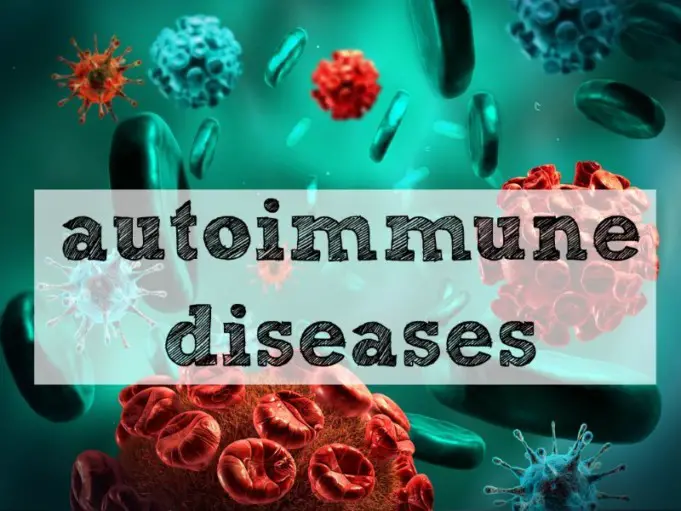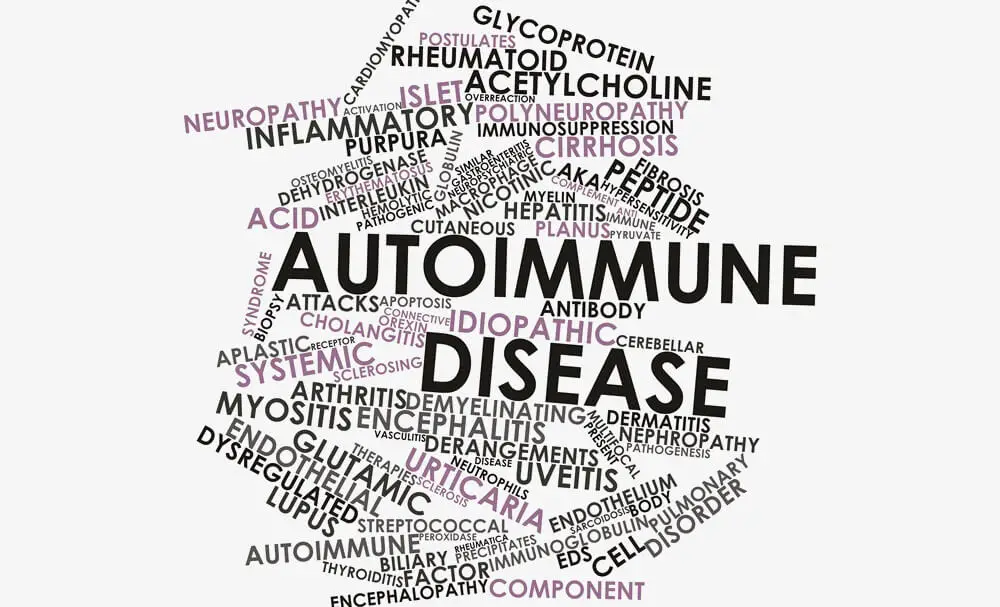One of the basic functions of the immune system is to protect the body by responding to invading microorganisms such as bacteria, viruses, and other disease-causing organisms by producing antibodies or a type of white blood cells known as sensitised lymphocyte.
But what happens when your immune response gets triggered against the cells in your body? Under normal circumstances, it is not natural for immune cells to attack the same cells they were designed to protect.
However, when such a thing happens, the victim is said to be dealing with an autoimmune disease. In this article, we’ll be introducing you to what autoimmune diseases are, their causes, and a list of all the autoimmune diseases currently in existence.
Overview of the immune system
The immune system is made up of a complex set of cellular chemicals and also soluble protein components that are created to protect the body against foreign invaders such as infectious agents and tumour cells.
Under no circumstance should the immune system response to self-molecules during its fight against foreign substances. Self or foreign molecules which are usually carbohydrates and protein that evoke particular immune responses and known as antigens.
There are immune cells throughout the human body some of them are located in discreetly in capsule organs like the thymus and spleen or as diffuse accumulations of myeloid cells and lymphoid cells as found in the gut or the skin where they are strategically positioned to monitor the entry of any foreign substance.
For the immune system to function as required, there is the need for proper interaction in a regulated manner between the immune cells and the cell products.
What are autoimmune diseases?
Now that we have a basic understanding of what the immune system is, we can see that an autoimmune disease would only occur when the immune system performs the opposite of the function it was originally designed to achieve.
When the immune system attacks self-molecules, an autoimmune disease occurs because of the breakdown of immunologic tolerance to autoreactive immune cells.
In a lot of cases, the event that kicks off the immune response to self-molecules is unidentifiable, but some studies have suggested a connection with environmental and genetic factors as well as some particular types of infections.
Approximately 3% of the population of North America and Europe currently suffer from one type of autoimmune disease or the other a lot of them even have symptoms of multiple disorders.
This data provided might be an underestimation because from what we no data for other less common autoimmune diseases and not available.
While autoimmune diseases are not gender specific, it has been discovered that women have a higher chance of developing an autoimmune disease than men.
About 75% of people living with autoimmune diseases are females. Even young post-pubescent females have been discovered to be about ten times more susceptible to autoimmune diseases than men their age.
The reason for this is likely that females and castrated males produce lower levels of testosterone and higher levels of oestrogen.
It has also been documented that hormones like oestrogen and testosterone may have a hand in altering the immune response however much of the evidence that shows the role extruding plays in autoimmune diseases come from animal models rather than human studies.
What we are trying to say in simpler terms is that normally your immune system can tell the difference between foreign invaders and your own cells.
But in the case of an autoimmune disease, your immune system mistakes parts of your body such as your skin or your joints as foreign organisms toss it releases proteins known as autoantibodies to fight against this healthy cells in an attempt to eliminate them.
Welcome autoimmune diseases attack a single organ; there are others that attack the entire body. Autoimmune diseases attack women during their childbearing age which is usually from 14 to 44 years.
Some autoimmune diseases can even run in families example of those are multiple sclerosis and lupus. Even though not every member of such a family will necessarily suffer from the same disease each of them will inherit a susceptibility to an autoimmune disease.
The incidence of autoimmune diseases is currently rising at an alarming rate, and for this reason, researchers are beginning to suspect environmental factors such as exposure to chemicals or solvents and also infections might be responsible.
Something else that is suspected to have a hand in causing autoimmune conditions is a western diet. People these days feed on foods containing triggers like high fat and high sugar.
Also, highly processed foods are known to cause inflammations which might trigger an immune response. These claims, however, are yet to be proven.
A theory known as the hygiene hypothesis was also created to draw links between a lack of exposure to germs and autoimmune diseases.
Because of the existence of antiseptics and vaccines children in today’s world are not exposed to as many gems as children were in the past and because of this lack of exposure their immune system might begin to overreact to harmless substances.
Common symptoms of autoimmune disease
While there are many autoimmune diseases, most of them come with similar early symptoms like:
- Fatigue
- Muscle aches
- Low-grade fever
- Swelling and redness
- Trouble with concentration
- Hair loss
- Numbness and tingling in the feet and hands
- Skin rashes
These are just a few of the symptoms that are common with most autoimmune diseases. However, specific diseases might have their own unique symptoms.
list of autoimmune diseases from A to V
- Achalasia
- Addisons disease
- Adult Still’s Disease
- Agammaglobulinemia
- Alopecia Areata
- Amyloidosis
- Ankylosing Spondylitis
- Anti-GBM/Anti-TBM nephritis
- Antiphospholipid syndrome
- Autoimmune angioedema
- Autoimmune dysautonomia
- Autoimmune encephalomyelitis
- Autoimmune Hepatitis
- Autoimmune inner ear disease
- Autoimmune myocarditis
- Autoimmune oophoritis
- Autoimmune orchitis
- Autoimmune pancreatitis
- Autoimmune retinopathy
- Autoimmunity urticaria
- Axonal and neuronal neuropathy
- Balo disease
- Behcet’s disease
- Benign mucosal pemphigoid
- Bullous pemphigoid
- Castleman disease
- Celiac disease
- Chagas disease
- Chronic inflammatory demyelinating polyneuropathy
- Chronic recurrent multifocal osteomyelitis
- Churg-Strauss syndrome or Eosinophilic granulomatosis
- Cicatricial pemphigoid
- Cold agglutinin disease
- Congenital heart block
- Coxsackie myocarditis
- Crest syndrome
- Crohn’s disease
- Dermatitis herpetiformis
- Dermatomyositis
- Devic’s disease
- Discoid lupus
- Dressler’s syndrome
- Endometriosis
- Eosinophilic esophagitis
- Eosinophilic fasciitis
- Erythema nodosum
- Essential mixed cryoglobulinemia
- Evans syndrome
- Fibromyalgia
- Fibrosing alveolitis
- Giant cell arteritis
- Giant cell myocarditis
- Glomerulonephritis
- Goodpasture syndrome
- Granulomatosis with polyangiitis
- Graves disease
- Guillain-barre syndrome
- hashimoto’s thyroiditis
- hemolytic anaemia
- henoch schonlein purpura
- herpes gestationis or pemphigoid gestationis
- hidradenitis suppurativa
- hypogammaglobulinemia
- IgA Nephropathy
- IgG4-related sclerosing disease
- Immune thrombocytopenic purpura
- Inclusion body myositis
- Interstitial cystitis
- Juvenile arthritis
- Juvenile diabetes
- Juveniles myositis
- Kawasaki disease
- Lambert-Eaton disease
- Leukocytoclastic vasculitis
- Lichen planus
- Lichen sclerosis
- Ligneous conjunctivitis
- Linear IgA disease
- Lupus
- Lyme disease chronic
- Meniere’s disease
- Microscopic polyangiitis
- Mixed connective tissue disease
- Mooren’s ulcer
- Mucha habermann disease
- Multifocal motor neuropathy
- Multiple Sclerosis
- Myasthenia gravis
- Myositis
- Narcolepsy
- Neonatal lupus
- Neuromyelitis optica
- Neutropenia
- Ocular cicatricial pemphigoid
- Palindromic rheumatism
- Pandas
- Paraneoplastic cerebellar degeneration
- Paroxysmal nocturnal hemoglobinuria
- Parry romberg syndrome
- Pars planitis
- Personage turner syndrome
- Pemphigus
- Peripheral neuropathy
- Perivenous encephalomyelitis
- Pernicious anaemia
- POEMS syndrome
- Polyarteritis nodosa
- Polyglandular syndrome type 1
- Polyglandular syndrome type 2
- Polyglandular syndrome type 3
- Polymyalgia rheumatica
- Polymyositis
- Postmyocardial infarction syndrome
- Postpericardiotomy syndrome
- Primary biliary cirrhosis
- Primary sclerosing cholangitis
- Progesterone dermatitis
- Psoriasis
- Psoriatic arthritis
- Pure red cell aplasia
- Pyoderma grangrenosum
- Raynaud’s phenomenon
- Reactive arthritis
- Reflex sympathetic dystrophy
- Relapsing polychondritis
- Restless legs syndrome
- Relapsing polychondritis
- Rheumatic fever
- Rheumatoid arthritis
- Sarcoidosis
- Schmidt syndrome
- Scleritis
- Scleroderma
- Sjogren’s syndrome
- Sperm and testicular autoimmunity
- Subacute bacterial endocarditis
- Stiff person syndrome
- Susac’s syndrome
- Sympathetic ophthalmia
- Takayasu’s arteritis
- Temporal arteritis or giant cell arteritis
- Thrombocytopenic purpura
- Tolosa hunt syndrome
- Transverse myelitis
- Type 1 diabetes
- Ulcerative colitis
- Undifferentiated connective tissue disease
- Uveitis
- Vasculitis
- Vitiligo
- Vogy-Koyanagi-harada disease
What do you think of our list? let us know if we missed anything, and do not forget to subscribe to our email or social media platforms as we will be going into them in more details.













